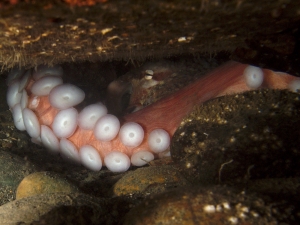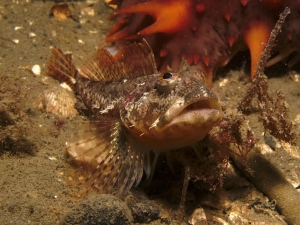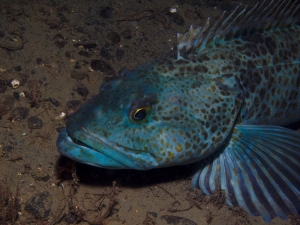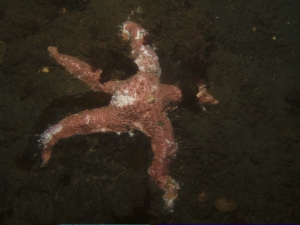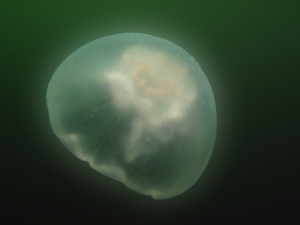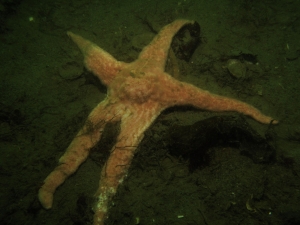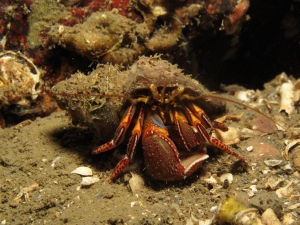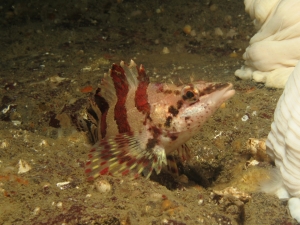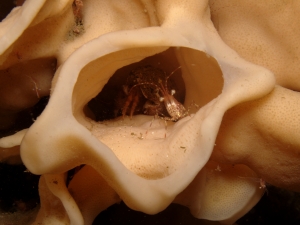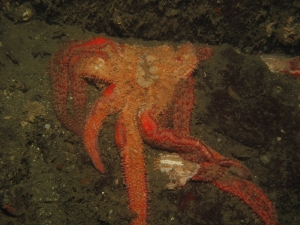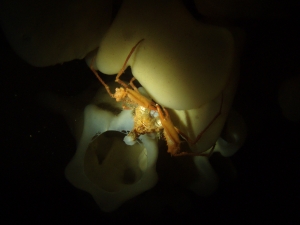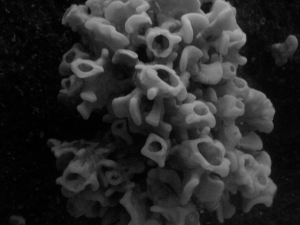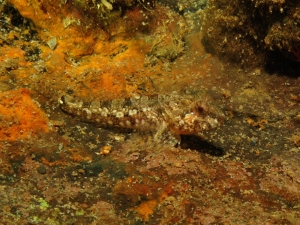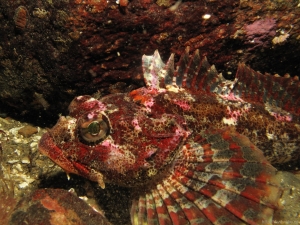With weather warnings for heavy rains and heavy winds for the afternoon, I found my way to Porteau cove in the morning for some diving before the weather set in. It was raining, but I managed to get changed into my drysuit without getting too soaked with the exception of my left foot as I hadn’t properly drained my drysuit after giving it a rinse after the previous week’s dives.
Luckily there as little wind, so we popped in for a long, shallow dive hitting most of the major highlights at Porteau. The visibility was still far from great, however I was surprised to find that the particulate in the water was much smaller. Instead of large suspended particles which are a back-scatter nightmare, it seemed to be more of a haze in the water. Good news for taking photos!
One of the highlights of the dive was coming out of the front of the Granthal, and coming face to face with a seal. Unfortunately the little guy bolted pretty quick, and didn’t come back for the rest of the dive. A shame given the improving vis for non-macro photos. I have a running theory that as long as I dive with a camera, I’m more or less guaranteed not have a seal spend any significant amount of time with me. Just as well that it was afraid of people, however.
Another highlight was finding a giant octopus (reminder: harvesting any marine wildlife at Porteau Cove is illegal, and Conservation Officers do watch). It was tucked into it’s den making it hard to line up the camera, but a couple of photos turned out.
Seeing both a seal close up and finding an octopus on the same dive truly made it amazing, but I suppose when you spend 106 minutes underwater, it increases the odds of seeing things! Luckily the water was still “warm”, so I didn’t get too cold at the end of the dive. In the end the severe weather warnings didn’t seem to really materialize, and we had a fantastic dive. I’m happy with the photos I got on this dive, and it’s hard to select a few to highlight in the post.
Starfish Die-Off Update
Interesting to note, last week I saw what looked to be a disintegrating Giant Pink Starfish. For the past month and a half we’ve been seeing Sunflower Starfish and Morning Sun Stars dying off en-mase, however this was the first I’d seen of another species. Today I saw plenty more of the 5-armed stars in various states of decay, confirming that another species appears to be dying off at Porteau Cove now. The Vancouver Aquarium’s AquaBlog has some thoughts on the earlier die-off, however it’s curious to see another species now dying away. Again, this could be a perfectly natural and regular occurrence, I simply don’t know. I’ve put up some photos in the gallery at the bottom of this post.
(If there’s no gallery, click the “View Full Article” link below)

